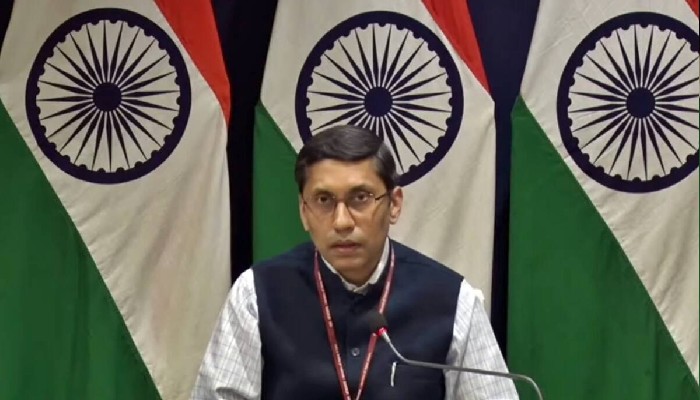Despite the inability of Pakistan to repay huge loans for the CPEC projects, China continues to finance and deeply entrench Islamabad in such projects with an aim to balance India at all costs
In the backdrop of the armed stalemate on the borders between India and China, after the violent incident in June 2020 triggered by China’s troops intrusions, Beijing has been upping the ante on the India-Pakistan sectors as well.
The latest provocation from Beijing, firstly, is to extend to a “third” country China-Pakistan Economic Corridor (CPEC) that is being built since 2014 with an estimated cost of $62 billion of which China claims to have spent $42 billion.
The CPEC of course is ridden with high debt with China’s interest rates estimated at as high as 5 percent, rampant corruption, project delays, opaque procedures and cost escalation. India naturally protested the CPEC projects for violating Indian sovereignty over Kashmir.
As a result, by early 2022, Pakistan’s debt amounted to nearly $250 billion that is about 80 percent of its gross domestic product, even as its foreign exchange reserves fell to a bare minimum of $8.5 billion.
One offshoot of this increasing debt is the restrictions imposed by the International Monetary Fund and the G-20 to secure fresh loans, including from China. As with Sri Lanka, China is refusing to bail out Pakistan. Indeed, China has no policy of supporting the revenue expenditures of other countries.
In addition to launching CPEC projects brazenly through Kashmir, China is reportedly refurbishing the underground bunkers and other defence facilities in Pakistan occupied Kashmir.
Beijing also intends to extend the “well-off society” villages – that it constructed over 600 across the borders with India-Bhutan and Nepal – to the PoK region as well. In the event of a default by Pakistan, China is eyeing to grab Kashmir territories – as it did in the 1960s when it incorporated Aghil, Shimshal, Ruksam and Sakshgam valleys.
To put India on the defensive, China as well began to raise “informal talks” on the Kashmir issue at the United Nations Security Council in vain in August 2019 and January 2020. Opposition from other members shelved China’s dream of internationalising the Kashmir issue.
However, China’s foreign minister Wang Yi again raised the Kashmir issue at the Organisation of Islamic Cooperation meeting at Islamabad in March 2022. India rejected China’s locus standi on the issue and made sure that Wang was given a cold shoulder during his announced visit to Delhi.
As India will be leading the G-20 process at the end of this year, China and Pakistan are coordinating to embarrass India which is contemplating one of the venues in areas close to Kashmir next year.
However, the more pertinent issues of terrorism emanating from Pakistan are still left unaddressed. Recent periods have witnessed several deadly attacks on Chinese citizens in Pakistan. In June 2017 for instance, two Chinese were kidnapped at Quetta and killed.
Next year witnessed Chinese highhandedness at Khanewal when several Chinese went on a rampage. Local media also accused the Chinese for selling 600 Pakistan women as brides in the China market.
Subsequent killing of Chinese in various parts of Pakistan was to rattle Beijing. In November 2018 for instance, the Karachi Consulate of China was attacked. In the same year, Baluchi Liberation Army activists attacked a bus ferrying 18 Chinese mining workers. A few months later, in May 2019, Baloch rebels attacked Pearl Continental Hotel at Gwadar, where China is building a dual-use port facility.
In 2020, Pakistan’s stock exchange was bombed with damage to Chinese investments. On April 21, 2021, China’s ambassador Nong Rong narrowly escaped a bomb attack on a Quetta hotel. Subsequently, nine Chinese workers and engineers were killed at Dasu hydroelectricity project on July 14, 2021 in the northern Khyber Pakhtunkhwa province. China’s media called for missile strikes on Pakistan to retaliate such terror attacks.
Another debilitating attack came on April 26, 2022 when Baluch female fidayeen Shaari Baluch exploded at Karachi Confucius Institute killing three Chinese. This incident rattled another 2,000 Chinese who made a beeline to the airport. This incident provoked China to deploy its own security agency in Pakistan. However, the Pakistani security establishment turned down the offer of China to protect the thousands of Chinese working on several projects.
Despite these threats, China feels beholden to its “iron brother” Pakistan so as to balance or even counter India. Both the militaries have been conducting a series of exercises and Beijing is supplying conventional and strategic weapon systems to Islamabad. Both militaries conduct Shaheen-series of exercises, Sea Guardian naval exercises and others to counter India. With over 40 naval contingencies sent to the Indian Ocean since 2008, and militarisation of Tibet and Xinjiang, China feels confident of balancing India in the region.
China also is trying to marginalise India through a series of multilateral efforts. These include Beijing's new penchant for a “Himalayan Quad” of working with select South Asian countries such as Pakistan, Afghanistan, Nepal and Sri Lanka. It has conducted four meetings either at the foreign ministerial level or officers’ level since 2020. China also backs Pakistan on the Afghan issue.
It is thus clear that despite the inability of Pakistan to repay huge loans for the CPEC projects, China continues to finance and deeply entrench Pakistan in such projects with the aim of balancing India at all costs. India then needs to take proactive counter-measure.
***The author is Dean of School of International Studies, Jawaharlal Nehru University at New Delhi; views expressed are his personal











 Contact Us
Contact Us
 Subscribe
Subscribe
 News Letter
News Letter
 Instagram
Instagram Youtube
Youtube